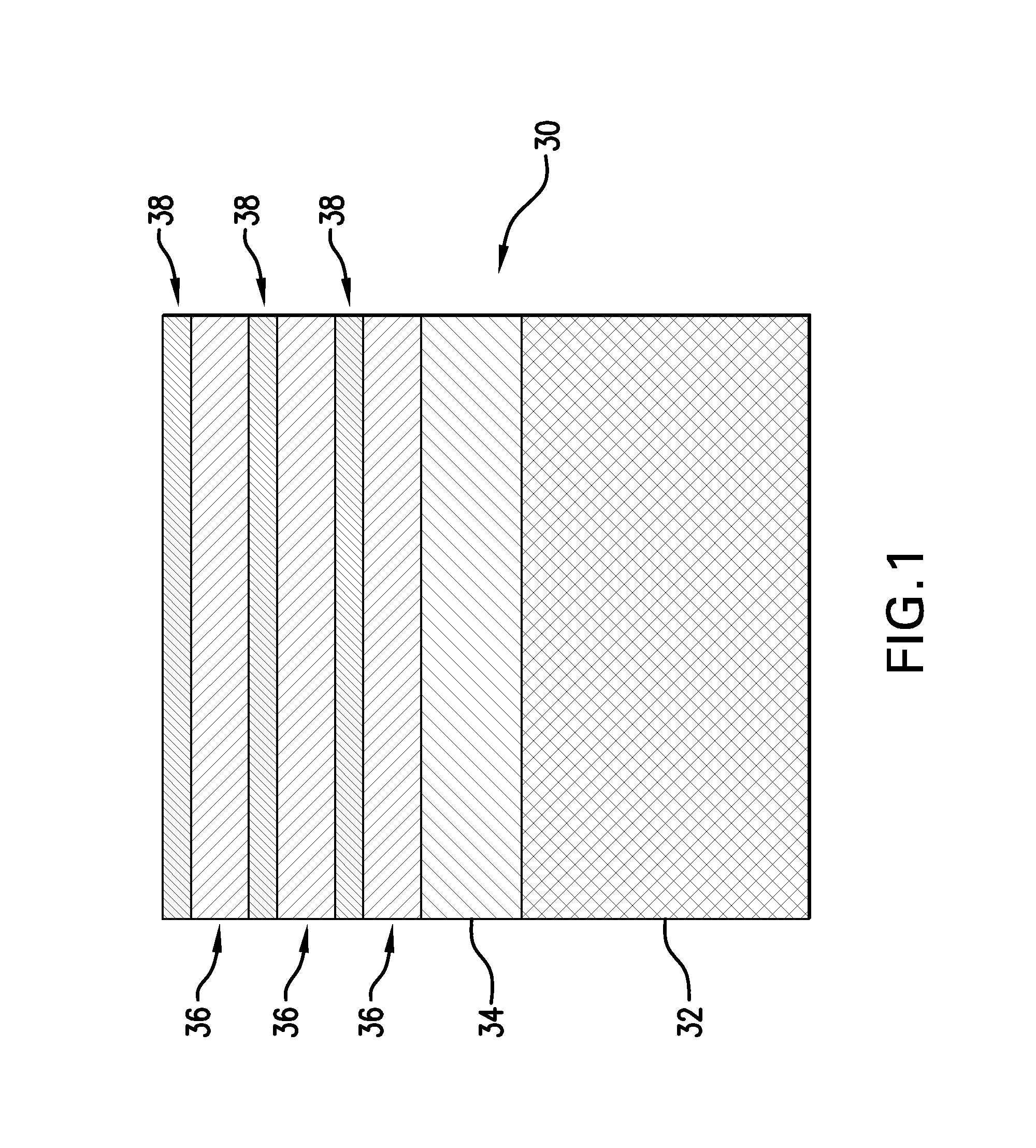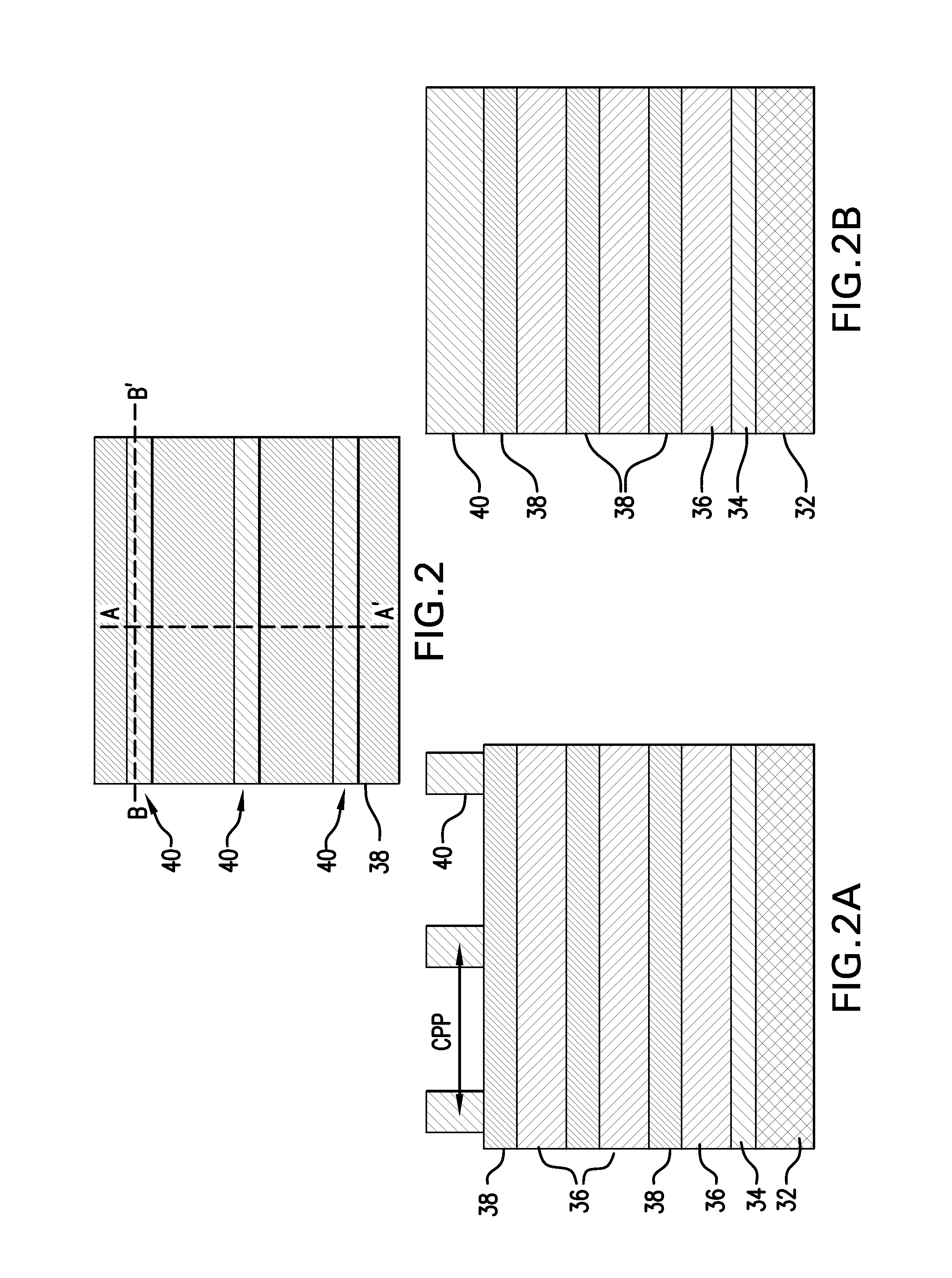Nanowire transistor structures with merged source/drain regions using auxiliary pillars
- Summary
- Abstract
- Description
- Claims
- Application Information
AI Technical Summary
Benefits of technology
Problems solved by technology
Method used
Image
Examples
Embodiment Construction
[0020]Fabrication of a gate-all-around nanowire transistor is facilitated by using auxiliary epitaxial nucleation source / drain fin structures formed as pillars on a substrate. The pillars are formed at the same level as the active region (RX) and have a pitch similar to the gate pitch (CPP) of the transistor to be fabricated.
[0021]FIG. 1 illustrates a structure 30 that is employed in one or more embodiments as a starting substrate. The base layer 32 can be bulk silicon, silicon germanium, or germanium on silicon in some embodiments. Other semiconductor materials such as III-V compound semiconductor materials may be employed in some embodiments. Multilayers of the semiconductor materials can also be used to form the base layer 32. In some embodiments, the base layer is a non-semiconductor material including, for example, a dielectric material and / or a conductive material. An electrically insulating layer 34, such as silicon dioxide or a high-k oxide such as hafnium oxide, aluminum ox...
PUM
 Login to View More
Login to View More Abstract
Description
Claims
Application Information
 Login to View More
Login to View More - R&D
- Intellectual Property
- Life Sciences
- Materials
- Tech Scout
- Unparalleled Data Quality
- Higher Quality Content
- 60% Fewer Hallucinations
Browse by: Latest US Patents, China's latest patents, Technical Efficacy Thesaurus, Application Domain, Technology Topic, Popular Technical Reports.
© 2025 PatSnap. All rights reserved.Legal|Privacy policy|Modern Slavery Act Transparency Statement|Sitemap|About US| Contact US: help@patsnap.com



